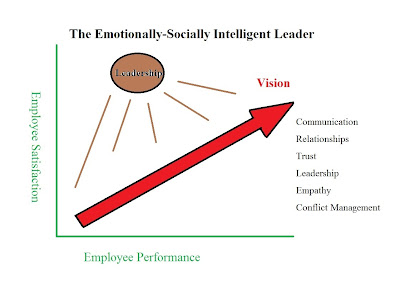By Dr Andree Swanson
One evening, I was exasperated over the loss of another student. No, the student did not die, did not even move to another state or city. This student was a loss in the program at the on ground school where I was teaching. This student could not manage the rigor of higher education, did not come to class, did not submit work on time, and did not even try. My mentor, Dr. Robert Throop, author of Reaching Your Potential: Personal and Professional Development, told me “you can’t save everyone!” Throop told me that much like patients who have cancer, even though you try to save the patient (or in this case, a student), you lose some patients (students) some of the time.
Since that date, over 15 years ago, I have been in higher education in a variety of capacities, mostly in the online arena. I have seen many ideas to retain and support students. Yet these ideas are like medicating the symptom without finding the root cause of the disease. A few of them work and are often good, but a more empathetic facilitator may be more appropriate for the adult learners. A paradigm shift must occur from getting the faculty member from the “sage on the stage” to the compassionate facilitator of learning.
Emotional Intelligence in the Online Classroom
Emotional Intelligence in the Online Classroom
In 2008, Berenson, Boyles and Weaver after doing research on emotional intelligence as a predictor for success, they concluded that knowing the soft skills attributes to student success. If the emotional intelligence skill improves student success, woudn’t an emotionally intelligent instructor improve student success, which would, in turn, improve retention?
Many studies have been published on how individuals with high emotional intelligence can enhance and increase the potential for positive outcomes. Those outcomes can be in the online classroom. An example is that people can work to increase their emotional intelligence, thus, improving performance. So, what is the performance for a compassionate facilitator of learning? Helping the students instead of enforcing obstacles. Adult learners WILL have obstacles, but the obstacles are not insurmountable.
Emotional intelligence is a learned and practiced skill. Daniel Goleman stated that for individuals in leadership positions, 85% of their competencies are in the emotionally intelligent domain. Compassionate faculty can be trained in improving their emotional intelligence.
Servant Leadership in the Online Classroom
Many studies have been published on how individuals with high emotional intelligence can enhance and increase the potential for positive outcomes. Those outcomes can be in the online classroom. An example is that people can work to increase their emotional intelligence, thus, improving performance. So, what is the performance for a compassionate facilitator of learning? Helping the students instead of enforcing obstacles. Adult learners WILL have obstacles, but the obstacles are not insurmountable.
Emotional intelligence is a learned and practiced skill. Daniel Goleman stated that for individuals in leadership positions, 85% of their competencies are in the emotionally intelligent domain. Compassionate faculty can be trained in improving their emotional intelligence.
Servant Leadership in the Online Classroom
Many faculty members may not admit this, but they are authoritarian in nature. With courses being short, they lay down the ground rules early. NO LATE WORK. Ten percent deduction for each day late, etc. Not only does this cause students stress, the professors are stressed by their own guidelines.
From my own experience, I was the instructor who stayed up until 12:01 (in your time zone) and by 12:06 I had posted all of my zeros for the next day. Off to bed now for a good rest! I reveled in deducting points per each day late. This is how I will establish my grade variance, I thought. Oftentimes, I was thankful for those that posted late just so that everyone would not “earn” the same grade. Not only did this build stress on my students, it was very stressful for me.
It was about this time that I learned of the teachings of Robert Greenleaf, author of The Servant as Leader. Greenleaf stated, “A servant-leader focuses primarily on the growth and well-being of people and the communities to which they belong.” Dr. Niall Ferguson, the Laurence A. Tisch Professor of History at Harvard University, said, “As a teacher, my strategy is to encourage questioning. I’m the least authoritarian professor you’ll ever meet.” Some of the traits of a servant leader include humility, good listening skills, empathy, and commitment to the people who are followers.
The Compassionate Facilitator of Learning Model
From my own experience, I was the instructor who stayed up until 12:01 (in your time zone) and by 12:06 I had posted all of my zeros for the next day. Off to bed now for a good rest! I reveled in deducting points per each day late. This is how I will establish my grade variance, I thought. Oftentimes, I was thankful for those that posted late just so that everyone would not “earn” the same grade. Not only did this build stress on my students, it was very stressful for me.
It was about this time that I learned of the teachings of Robert Greenleaf, author of The Servant as Leader. Greenleaf stated, “A servant-leader focuses primarily on the growth and well-being of people and the communities to which they belong.” Dr. Niall Ferguson, the Laurence A. Tisch Professor of History at Harvard University, said, “As a teacher, my strategy is to encourage questioning. I’m the least authoritarian professor you’ll ever meet.” Some of the traits of a servant leader include humility, good listening skills, empathy, and commitment to the people who are followers.
The Compassionate Facilitator of Learning Model
Step 1 – Learn more about improving your emotional intelligence and seek to bring these qualities into the classroom.
Step 2 -- Humble yourself. Establish yourself as an expert in the field. Engage with the student in a way that shares this expertise but present yourself with humility. This is the “you get more bees with honey” approach.
Step 3 – Empathize with your students. Remember the times when your baby was sick, your mother was dying, you just had a car accident. Stuff happens. Give the student a break. That one break might be the one that student needs.
Step 4 – Improve your listening skills (even in the online classroom). Are you really reading what the student is writing to you? When apply the Socratic method are you listening to what your student is saying? Can you hear the real issue when the student says, “I don’t understand?”
Step 5 – Commitment to the students. The bottom line is what you are being paid to do. Grade papers? Yes. Submit your grades on time. Yes. Nevertheless, the most important aspect of an online faculty member’s job is helping the student be successful.
The other day Dennis Prager, a nationally syndicated talk show host, said the most important thing that parents can do is to raise children who are successful in their own right. As online faculty members to achieve our mission is to be able to go to sleep at night and not count the zeros as they rest on your pillow. Our daily mission is to help students achieve his or her dream.
Step 2 -- Humble yourself. Establish yourself as an expert in the field. Engage with the student in a way that shares this expertise but present yourself with humility. This is the “you get more bees with honey” approach.
Step 3 – Empathize with your students. Remember the times when your baby was sick, your mother was dying, you just had a car accident. Stuff happens. Give the student a break. That one break might be the one that student needs.
Step 4 – Improve your listening skills (even in the online classroom). Are you really reading what the student is writing to you? When apply the Socratic method are you listening to what your student is saying? Can you hear the real issue when the student says, “I don’t understand?”
Step 5 – Commitment to the students. The bottom line is what you are being paid to do. Grade papers? Yes. Submit your grades on time. Yes. Nevertheless, the most important aspect of an online faculty member’s job is helping the student be successful.
The other day Dennis Prager, a nationally syndicated talk show host, said the most important thing that parents can do is to raise children who are successful in their own right. As online faculty members to achieve our mission is to be able to go to sleep at night and not count the zeros as they rest on your pillow. Our daily mission is to help students achieve his or her dream.

